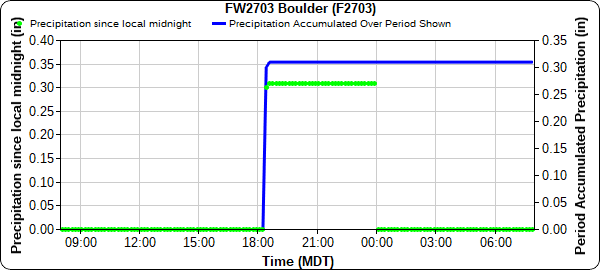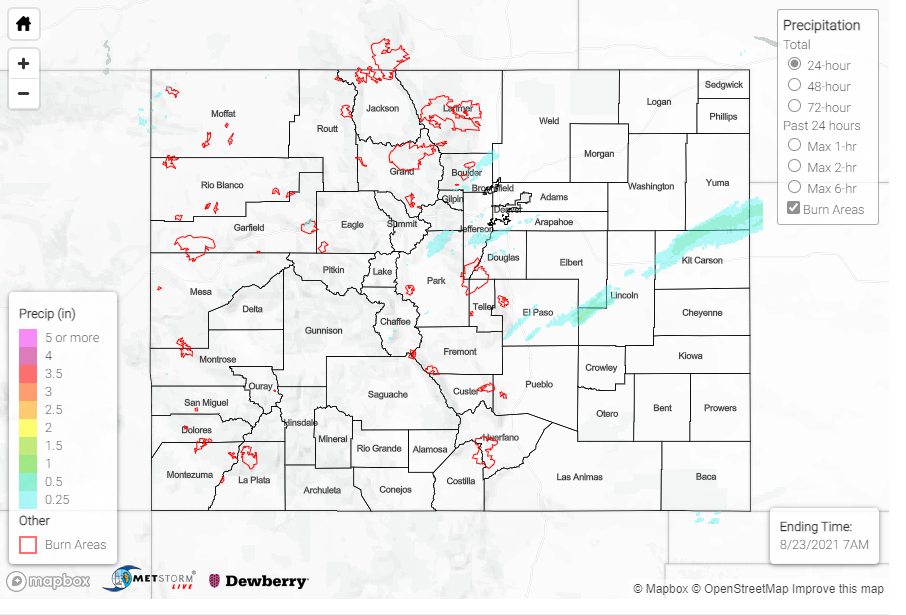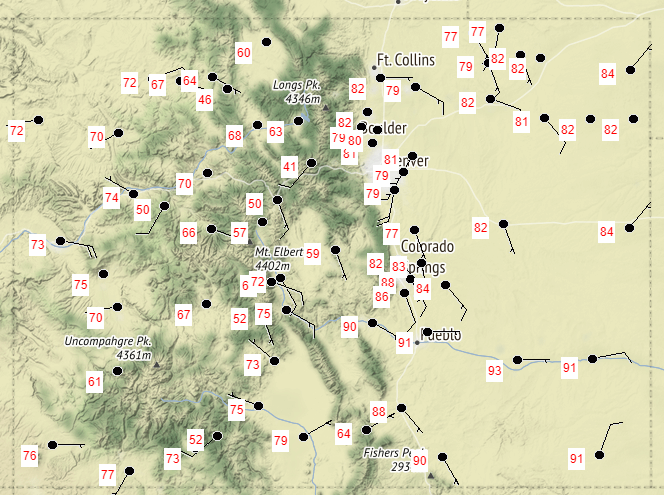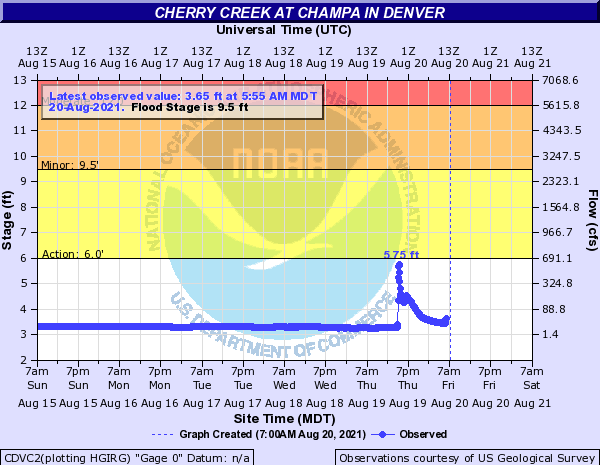Issue Date: Monday, August 23rd, 2021
Issue Time: 9:05 AM MDT
Summary:
As forecasted, yesterday was calm as hot and dry conditions settled into the state. There were a handful of isolated showers in the Grand Valley and Southwest Slope overnight and early morning, but only Trace – 0.05 inches was reported. The main weather story was temperatures kicking back up after a cooler Friday and Saturday. The Southeast Plains reached over 100 degrees in La Junta, Lamar, and Granada.
No flooding was reported on Sunday. On Friday, the USGS published a storymap detailing the many debris flows that occurred on the Grizzly Creek burn scar through Glenwood Canyon after this summer’s heavy rain, as well as some historical flows after fires in 1994 and 2002.
For rainfall estimates in your area, check out the State Precipitation Map below.
Click Here For Map Overview







